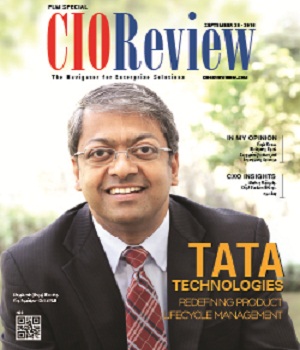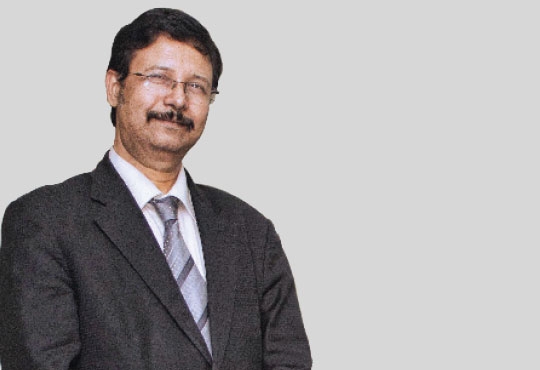
Project Management - An Evolution
Omer Awan, Senior Regional CIO, EMHS | Thursday, 20 October 2016, 09:55 IST
 Project management like many other disciplines has evolved over time to not only stay relevant but to continue to deliver the value that users have come to expect from it. Traditional waterfall methodology takes on a sequential approach, is still practiced and well suited for certain areas. However, more projects are leveraging some form of Agile (an incremental and iterative approach) and can comprise of Scrum, Lean, Kanban, a hybrid, and so on. The purpose of this article is not to advocate for any specific form of Agile but to highlight a few concepts and areas that I have found very useful over the years in different roles as a project manager, sponsor, and user.
Project management like many other disciplines has evolved over time to not only stay relevant but to continue to deliver the value that users have come to expect from it. Traditional waterfall methodology takes on a sequential approach, is still practiced and well suited for certain areas. However, more projects are leveraging some form of Agile (an incremental and iterative approach) and can comprise of Scrum, Lean, Kanban, a hybrid, and so on. The purpose of this article is not to advocate for any specific form of Agile but to highlight a few concepts and areas that I have found very useful over the years in different roles as a project manager, sponsor, and user.
Waste Reduction
This is at the heart of Lean and what this simply means is to provide high quality product or service to users with fewer resources by leveraging processes that produces zero waste. There are several different forms of waste and it can include wait, non-productive or redundant meetings, defects, over-processing, over-production, and so on. The idea is that anything that does not add value and is not a regulatory, legal, or compliance mandated activity, is probably waste.
When you buy a car, you start becoming more aware of cars with similar make and model. The number of that type of car hasn't increased, but your awareness of it has. Similarly, this concept requires that the project team put on the Lean glasses and review the project meetings, attendees, activities, and milestones to identify and eliminate waste. This does not require becoming an expert in Lean but only to recognize and remove activities and processes that add no value.
Handoffs
The true power of project management comes to light when there are several different teams involved that need to work together to develop a solution. This requires several handoffs between teams and this is where a lot of waste can be found. Lack of planning, transparency, and communication can often lead to a team that is not ready to process or work on something even though it’s waiting in the queue. Clearly identifying handoff dates and planning proactively to accommodate those dates is key.
Value Stream
This is another Lean concept and highlights that the true value should be assessed by stringing together value produced by each team in a project. In other words, breaking the team silos and looking at the activities horizontally across the continuum to assess value. This becomes very important as the number of disparate teams working on a project increases. The project leadership needs to continuously reinforce with the project team, the bigger picture and the importance of working as one project team.
It’s About the Journey as well
It’s just not enough to get a project done on time, within budget and scope. It’s also about how we get there, the entire experience. Often project teams work well with each other and may even be set to meet milestones on time, but the area that often need help from stakeholder’s perspective, is communication. We are in an age of real-time communication and status updates. The airline and banking industry are good examples. Leveraging virtual or physical dashboards to display project status with some level of detail, that is kept updated as things change, is an efficient way to keep project stakeholders informed.
We have entered an era where the user has also become the product manager and defines how the product must work to be valuable. This has driven the evolution in the software industry and software that used to take anywhere from three to six months to develop, can be created in just a couple of weeks by leveraging API (Application Programming Interface) based architecture. The same has lead to IT consumerization in healthcare. Patients prefer to interact with hospitals and providers via mobile devices and prefer a one stop shop approach where they can schedule appointments, communicate with provider, and view results etc. As expected, project management is drawn into this epoch of Agile to support such projects.
The reality is that Agile has transformed all sorts of businesses and there are success stories all over the place. Healthcare organizations are successfully using Lean, Scrum, and other forms of Agile to offer high quality, low cost, and timely care to patients. The important thing to note is that Agile is not a tactic or a cost reduction mechanism, it’s a mindset. To be really successful, the entire organization needs to buy-in and practice across the board. However, we don’t have to wait for nirvana, just get started by employing easy to use and valuable Agile concepts.
CIO Viewpoint
End to End Supply Chain Planning is the Need of...
By Abel Correa, CIO , Arvind Lifestyle Brands
Managing Insurance Portfolio through a Smartphone
By Mehmood Mansoori, Member of Executive Management - IT Innovation & CEM, HDFC ERGO General Insurance Company
Optimize routes with Central level integration
By Tarun Anand, GM - IT, Mother Dairy Fruit & Vegetable
CXO Insights
The Monumental Shift in Traditional PLM Centric...
By Dr. Chandan Chowdhury, Managing Director, Dassault Systemes India
Benchmarking Report Administering organizations...
By Nagi Kasinadhuni, GM, Communications, APAC, Dimensions Data India
Embracing Cloud-Communications for a...







